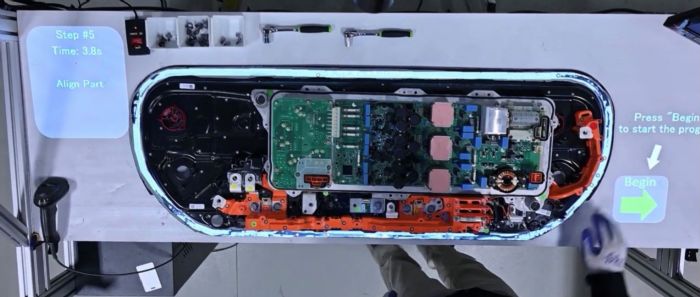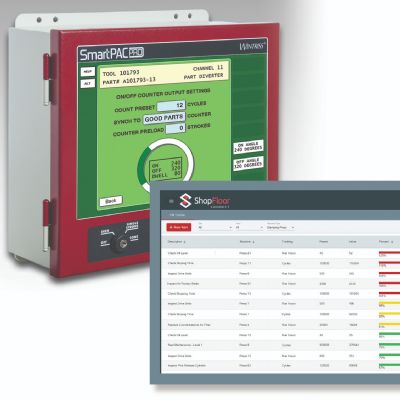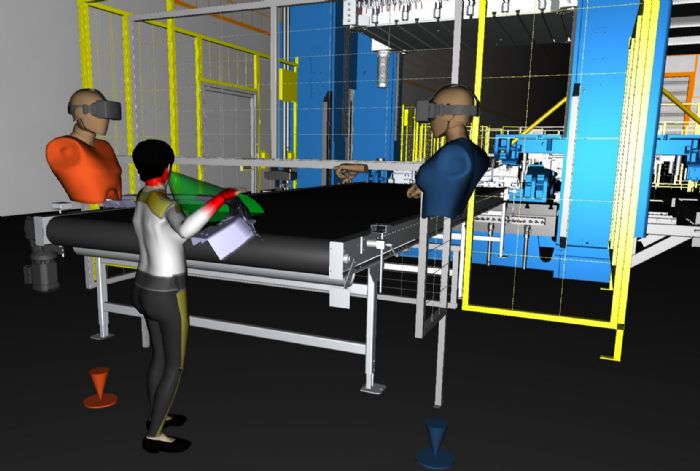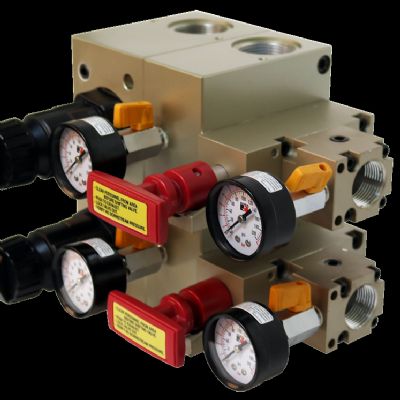AI sees and learns this, which enables metal formers to develop safer processes for entering machine areas—incorporating horizontal beams or placing other access controls to properly and safely route operators and maintenance personnel. Doing so can remove dangerous shortcuts that lead to injuries.
 “This goes beyond using IoT with sensors,” Phillips says, noting that AI can assess not only sensor-based light curtain trips, but things like the who, where and when of buttons pressed, switches flipped and routes taken. “AI can learn and evaluate all of this to help eliminate bad habits. I’ve seen operators reach underneath light curtains along the sides of presses to rake out scrap with their hands. No one told them to do that. It just happens and it’s a bad habit, but these actions won’t show up just from employing sensored IoT.”
“This goes beyond using IoT with sensors,” Phillips says, noting that AI can assess not only sensor-based light curtain trips, but things like the who, where and when of buttons pressed, switches flipped and routes taken. “AI can learn and evaluate all of this to help eliminate bad habits. I’ve seen operators reach underneath light curtains along the sides of presses to rake out scrap with their hands. No one told them to do that. It just happens and it’s a bad habit, but these actions won’t show up just from employing sensored IoT.”
Vision Systems Project Instructions onto Tooling
One aspect of AR ideal for stamping operations involves projection of work instructions onto tooling to lead operators through loading and assembly tasks—no special glasses needed.
“In a manual stamping operation, operators may have to load circular discs in a certain orientation, perhaps with writing in a certain direction,” Phillips explains. “Because the part is round, sensors alone can’t do anything but verify placement of the part. Projecting information and/or an image onto the die that shows proper orientation provides a solution. A vision system then verifies that the projection matches the video feed, allowing the process to proceed.”
 Though not a stamping application, Phillips recalls a recent Link Controls project that shows projection in action. A manufacturer had a goal for a welding system to project the proper sequence for loading parts into a fixture. A projection details proper part feeding sequences and part orientations, with video verifying proper placement. Only then does the welding machine go to work.
Though not a stamping application, Phillips recalls a recent Link Controls project that shows projection in action. A manufacturer had a goal for a welding system to project the proper sequence for loading parts into a fixture. A projection details proper part feeding sequences and part orientations, with video verifying proper placement. Only then does the welding machine go to work.
Another application cited by Phillips: the proper loading sequence of multiple parts that must be welded together. Here the parts require overlapping, and again, projection and a vision system instruct and verify before welding proceeds.
“This technology is starting to take a larger hold in manufacturing, including stamping operations,” Phillips says.
Driving adoption, according to Phillips: “It’s harder and harder to find experienced operators. The more that we can incorporate AR, projection and vision systems, the greater the ability to navigate the shortage and train operators more quickly.”
One caveat: Employing projection requires a static environment with no movement along the projected area. AR goggles—a more-intensive developing technology—enable users to project information, images and diagrams onto various areas of equipment and a line, wherever they happen to look. For this reason, projection with a vision system finds greater use in manual operations, as automated and continuous stamping and welding operations don’t offer the needed static states.
VR Assists in Line Planning
VR, too, can provide real value in stamping operations, especially in the planning stages. Here, the technology allows evaluation of human-centric processes and the work environment to optimize tooling engineering, production-process planning and maintenance planning. For a planned stamping line, VR use enables an ergonomic review of the proposed end-of-line layout and automation setup; evaluation of tooling layout and blocking for ease of maintenance and repair; and validation of machine maintenance during press commissioning.
Assembly training also benefits from VR, as evidenced in its use by automotive OEMs to train personnel in sequencing and locations of parts and components along assembly lines.
The Future is Now
With AR and projection/vision systems having cut their teeth in assembly and welding applications, Phillips sees a stepped-up transition into stamping operations. Robotics on stamping lines lend themselves more to AR and VR applications, with suppliers of robots, presses and other automation equipment now providing AR and VR solutions. And, we see effective VR for production-line planning and assembly-line training.
None of what’s described above is pie-in-the-sky…it’s happening today. Control integration ties all of it together, leading to an all-encompassing solution that collects and analyzes data, addresses challenges with workforce availability and experience, improves safety, and, ultimately, improves production of quality parts. MF
View Glossary of Metalforming Terms
See also: AP&T North America Inc., ESI North America
Technologies: Pressroom Automation, Sensing/Electronics/IOT
Comments
Must be logged in to post a comment. Sign in or Create an Account
There are no comments posted.Linear Automation Launches Tonnage-Monitoring System and Cal...
Wednesday, January 3, 2024
 Pressroom Automation
Pressroom AutomationDelta Motion Launches Updated Website
Tuesday, December 19, 2023
 Pressroom Automation
Pressroom AutomationNew Advanced Features in Wintriss' SmartPac Pro Press-Automa...
Monday, November 6, 2023







 “We can broaden the spectrum because IoT represents just a piece of the puzzle for communicating information throughout the pressroom and beyond,” Phillips offers. “More metal formers are employing some level of that, and now you’re seeing AI, AR and VR incorporated into manufacturers’ information systems.”
“We can broaden the spectrum because IoT represents just a piece of the puzzle for communicating information throughout the pressroom and beyond,” Phillips offers. “More metal formers are employing some level of that, and now you’re seeing AI, AR and VR incorporated into manufacturers’ information systems.”